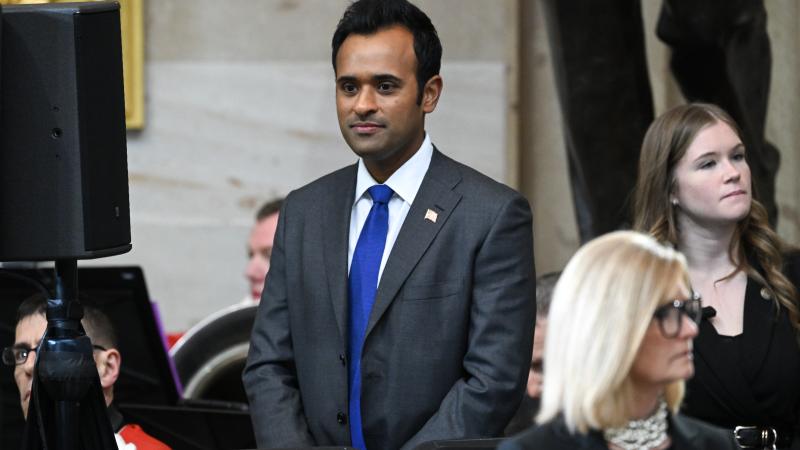If Texas turns blue, can Republicans ever win the White House again?
With a whopping 38 electoral votes, GOP would have slim path without Lone Star State.
Let's start in 2000. That year, former Texas Gov. George W. Bush absolutely annihilated Democrat Al Gore in Texas, winning 59.3% of the vote to Gore's 37.9%. Bush won by 1.3 million votes of about 6 million cast.
Bush crushed Democrat John Kerry in 2004, 61.1% to 38.2%. That time he won by nearly 1.7 million votes of some 7 million ballots cast.
But things began to change when Barack Obama ran for president. While the late Sen. John McCain defeated the Democrat in 2008, he got just 55.4% of the vote to Obama's 43.6%. And McCain won by fewer than 1 million votes of about 8 million ballots cast.
Utah Sen. Mitt Romney took the margin back above that million-vote mark, defeating Obama in Texas by more than 1.2 million votes of about 8 million ballots cast as he took the state by 57.1% to 41.3%.
Yet President Trump couldn't match those numbers in 2016. He won 52.1% to Democrat Hillary Clinton's 43.1%. And he won by slightly more than 800,000 votes of some 8.5 million cast.
Things got worse in 2020, when Trump got 52.1% of the vote to Joe Biden's 46.5%. While a win, his margin was just more than 600,000 votes — of nearly 11 million cast.
You read that right: 11 million. That's double the number of votes cast in the state in 1996.
As singer Bob Dylan said, "The times they are a changin'." And with a whopping 38 votes in the Electoral College, if Texas ever turns blue, does the GOP even have a viable path back to the White House?
The bluing of Texas — perhaps already underway — will still take more time. Virginia, for instance, hadn't voted for a Democrat since Lyndon Johnson in 1964. Bush won the state handily in 2000, but the margin was tighter in 2004. Obama in 2008 won the state — which political commentators called "purple" — by about 250,000 votes of nearly 4 million cast. He won again in 2012 by just 125,000 votes.
Then Clinton won Virginia in 2016 by 150,000 votes, and Biden won in 2020 by nearly 500,000 votes. No longer purple, Virginia appears to be a sold blue state now.
The metrics that have been turning Virginia — and Colorado, for that matter — blue for the last decade now appear to be happening in Texas. But the Lone Star State has one very different element: Californians.
More than 687,000 Californians have moved to Texas over the last decade, according to an analysis of U.S. Census Bureau data from 2010-19. With no state income taxes — one of only a handful of states to offer such a break — Texas is a huge change from high-tax California.
Californians made up roughly 13% of the entire population that has migrated to Texas since 2010, more than any other single state, the Dallas News reported earlier this month. "Last year, 82,235 Californians moved to Texas, down just slightly from the 10-year peak in 2018 of 86,164," said the paper.
Some big names have joined the exodus. Tesla founder Elon Musk, who had been criticizing California for months over its handling of the COVID-19 pandemic, moved much of his business operations to Texas. And Joe Rogan, who hosts a powerful podcast, also spent months blasting California before announcing his move to Texas.
Both Musk and Rogan moved to Austin — which was the top destination in 2020, according to LinkedIn.
Austin "gained the most people between April and October this year, followed by Phoenix, Nashville and Tampa, according to data on 47 metropolitan areas analyzed by LinkedIn," Bloomberg News reported. "At the same time, the San Francisco Bay Area and New York City lost people."
For every one person that moved out of Austin, 1.53 people moved in, LinkedIn found.
Democrats see an opportunity. The influx from liberal California means perhaps their base is growing there. And the population is skewing younger, too — and younger people often vote Democratic.
In an unusual move, Democrat Joe Biden made a last push in the state. At the end of October, just days before Election Day, Biden mounted a last-ditch effort after Texas was declared a "toss-up" by analysts at the Cook Political Report.
His running mate, Sen. Kamala Harris, swung through Fort Worth, McAllen and Houston with just four days to go. In the final month alone, the Biden-Harris campaign dropped more than $6 million on Texas campaign ads, more than any Democratic presidential nominee had spent there in decades.
Jim Henson, a University of Texas at Austin professor and the director of the Texas Politics Project, said Republicans will need to adapt if they want to keep winning the state.
"Likely it will start to look like Florida, with a large population and lots of turnover in offices," Henson told My San Antonio. "… Even at the state level as Republicans fight harder in the general elections to keep the state, they are going to become more open to issues and be less alienating to the more moderate voters."
But Joe Straus, a Republican from San Antonio, said the state turning blue might not happen anytime soon.
In a Nov. 12 piece in the Washington Post headlined "Why Democrats' dreams of a blue Texas keep getting dashed," Straus said that "many are now left wondering: Is trying to break Republicans' lock on the Lone Star State a fool's errand?"
"Democratic optimists who believed 2020 would sweep Republican incumbents out of the White House and Senate, and sweep a Democratic majority into the Texas House of Representatives, are stumped as to why the state remained stubbornly red," he wrote.
But Straus offered a word of warning to Republicans.
"Texas is not making the rapid partisan shift we have seen in places such as Virginia and Colorado," he wrote. "But while seismic change did not arrive this year, this state — diverse and dynamic in so many ways — is changing quickly. If they hope to keep winning, Republican leaders will need to keep up."















